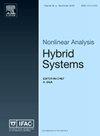递归神经网络的可达性分析
IF 3.7
2区 计算机科学
Q2 AUTOMATION & CONTROL SYSTEMS
引用次数: 0
摘要
本文提出了一种新的稀疏星集表示,并扩展了最近的星可达性方法来验证vanilla、长短期记忆(LSTM)和门控循环单元(GRU)递归神经网络(rnn)在安全关键应用中的鲁棒性。rnn是一种流行的机器学习方法,适用于各种应用,但它们容易受到对抗性攻击,其中稍微干扰输入序列可能导致意想不到的结果。最近验证rnn的著名技术包括展开和不变推理方法。第一种方法有缩放问题,因为展开RNN会创建一个大的前馈神经网络。第二种方法使用不变集,具有更好的可伸缩性,但由于随着时间的推移过度逼近误差的积累,可能产生未知的结果。本文介绍了一种既健全又完备的rnn互补验证方法。可以使用松弛参数将该方法转换为快速的过逼近方法,但仍能提供可靠性保证。香草RNN验证方法被设计为与NNV一起使用,NNV是一种验证深度神经网络和支持学习的网络物理系统的工具,而LSTM和GRU RNN的验证方法则在StarV上实现。与最先进的验证香草RNN的方法相比,扩展精确可达性方法快了10倍,过度逼近方法快了100倍到5000倍。尽管与最先进的方法相比,稀疏星集的速度较慢,但总的来说,它能够验证比它们更健壮的情况。本文章由计算机程序翻译,如有差异,请以英文原文为准。
Reachability analysis of recurrent neural networks
The paper proposes a new sparse star set representation and extends the recent star reachability method to verify the robustness of vanilla, long short-term memory (LSTM), and gated recurrent units (GRU) recurrent neural networks (RNNs) for safety-critical applications. RNNs are a popular machine learning method for various applications, but they are vulnerable to adversarial attacks, where slightly perturbing the input sequence can lead to an unexpected result. Recent notable techniques for verifying RNNs include unrolling and invariant inference approaches. The first method has scaling issues since unrolling an RNN creates a large feedforward neural network. The second method, using invariant sets, has better scalability but can produce unknown results due to the accumulation of over-approximation errors over time. This paper introduces a complementary verification method for RNNs that is both sound and complete. A relaxation parameter can be used to convert the method into a fast over-approximation method that still provides soundness guarantees. The vanilla RNN verification method is designed to be used with NNV, a tool for verifying deep neural networks and learning-enabled cyber–physical systems, while the verification approach of LSTM and GRU RNNs are implemented on StarV. Compared to state-of-the-art methods for verifying a vanilla RNN, the extended exact reachability method is faster, and the over-approximation method is to faster. Although the sparse star set is slow compared to state-of-the-art methods, it was able to verify more robust cases in general than them.
求助全文
通过发布文献求助,成功后即可免费获取论文全文。
去求助
来源期刊

Nonlinear Analysis-Hybrid Systems
AUTOMATION & CONTROL SYSTEMS-MATHEMATICS, APPLIED
CiteScore
8.30
自引率
9.50%
发文量
65
审稿时长
>12 weeks
期刊介绍:
Nonlinear Analysis: Hybrid Systems welcomes all important research and expository papers in any discipline. Papers that are principally concerned with the theory of hybrid systems should contain significant results indicating relevant applications. Papers that emphasize applications should consist of important real world models and illuminating techniques. Papers that interrelate various aspects of hybrid systems will be most welcome.
 求助内容:
求助内容: 应助结果提醒方式:
应助结果提醒方式:


